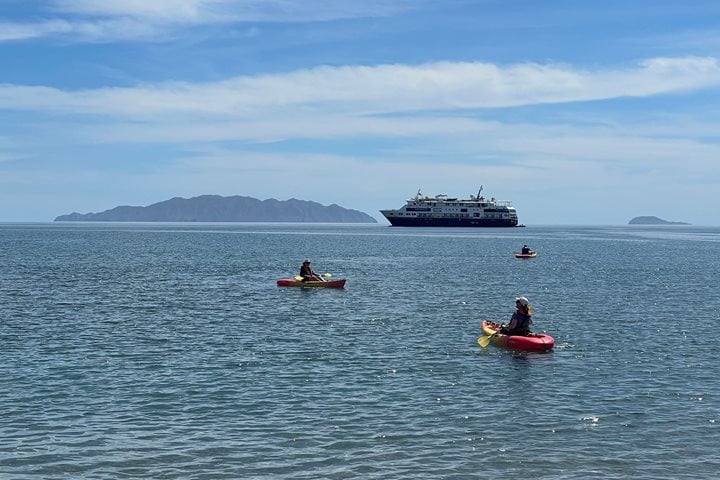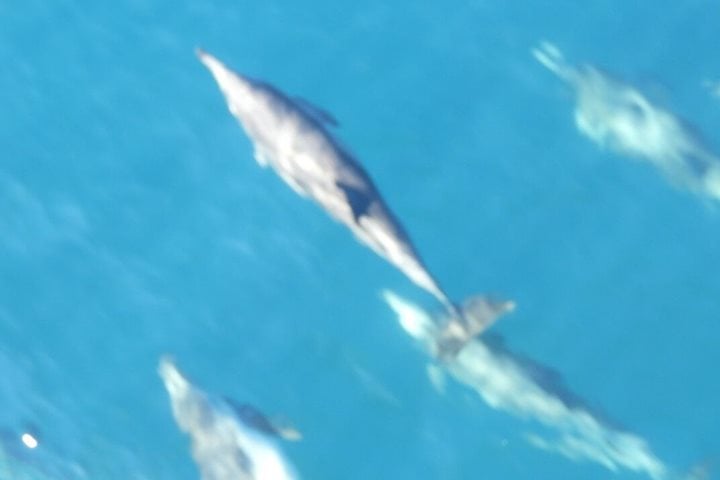National Geographic Venture started a new day by sailing off the entrance to Magdalena Bay, an area well known by both locals and whale-watching enthusiasts as “La Entrada,” meaning “the entrance” to the bay. While the sun rose behind Santa Margarita Island, we were extremely fortunate to see a phenomenon known as violet flash—one even more rare that of the famous green flash! Soon after, we began to see whale blows, and the group spent time watching a small cluster of humpback whales swimming beside one other.
Numerous marine birds called our attention, including the magnificent frigatebirds and pink-footed shearwaters, the latter swooping swiftly around the ship decks while brown pelicans plunged for small fish near the surface.
We also had the delight of being able to witness an unexpected pair of Nazca boobies! More frequently farther south in the Mexican Pacific, these birds are not often seen in waters off Baja California. One of the them must have been feeling showy for the fact that it spent a good deal of time flying closely, just of the ship’s bow.
After a delicious brunch, we sailed through La Entrada, anchoring at Man O’War Cove off Magdalena Island. The cove was named in the occasion of President Theodore Roosevelt’s Great White Fleet spending time in Magdalena Bay. It was here where a couple dozen American warships and some 15,000 sailors had once conducted firing operations. In fact, local fishermen have on numerous accounts found huge projectiles along the hills of both Magdalena and Santa Margarita islands. Old photographs of the Great White Fleet show the exact same spot where we anchored today!
We went ashore to stretch out and explore the mangroves and surrounding shoreline as we looked around for birds and other wildlife. We went out into the open Pacific once again to continue our journey toward the southernmost part of the peninsula of Baja California.







